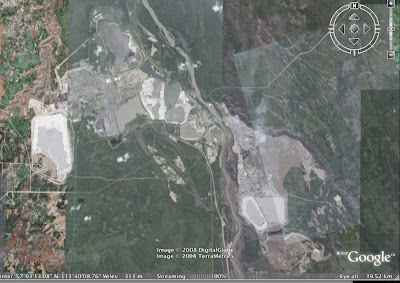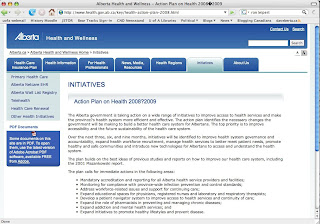It was never my intention to turn this blog into an “embarrassing things Ed Stelmach said today” blog, but our Premier really isn’t doing a good job deterring me.
Last week, Alberta Tory Premier Ed Stelmach lashed out the United Nations for unfairly targeting Alberta as Canadian soldiers are serving in Afghanistan, this week Stelmach lashed out at Liberal Opposition MLAs for being “subversive” and not having pride in Alberta for questioning the government’s $25-million oilsands rebranding campaign during a budget debate.
Myself, I have lots of pride in my home province of Alberta. That’s why I’d rather my government spent the $25-million on figuring out how to clean up the oilsands and 50 square kilometers of toxic tailing ponds in northern Alberta, rather than spend it on a $25-million international advertising campaign. I guess that makes me a subversive too.
Here’s the debate from Alberta Hansard:
Mr. Hugh MacDonald: Interesting.
Thank you, Mr. Chairman. I would remind the hon. Premier that in a democracy the Official Opposition has a role to make sure that the government remains accountable. Whenever you see govern-ment spending increase at such a dramatic rate as it has, there have to be questions asked. Why is it necessary for this budget to be the way it is? You may not like it, but it’s a function of democracy, and it’s worked quite well.
Now, on page 70 of the fiscal plan Executive Council is again listed. We have the 2008-09 ministry expense by function, and there are many different functions here. There’s a breakdown for health, education, social services, environment, general government. I’m surprised that some of your Public Affairs Bureau money wouldn’t be under this title because so much of it is going to be used for the greenwashing program. Specific to economic development, if you look, for instance, at Agriculture and Rural Development, it has a billion dollars set aside in that function, but there’s none for Executive Council. It’s just the $ 30 million. Why?
The Deputy Chair: The hon. Premier.
Mr. Ed Stelmach: Thank you, Mr. Chairman. The earlier comment with respect to the role of opposition is exactly right. The role of opposition in a democratic government is very important, but it’s not to be subversive. There’s a big difference. It’s a big difference. Once again, you hear comments made that are not just critical of government, but they lead to innuendo. Unfortunately, this kind of behaviour extends past this Assembly, which has a tremendous history, more than a hundred-year history. If you want to play that game, I can play it.
In terms of the $ 25 million, that will be invested in the Public Affairs Bureau to rebrand the province. It will be there, and I will defend it no matter how much the opposition wants to degrade the province of Alberta, and I’ll continue to do it because I am very proud of my province. I share the pride of every member in this Assembly. If they don’t have that same pride, well, that’s up to them, but I do, and so do my colleagues.
Mr. MacDonald: Certainly, no member on this side of the House degrades Alberta, and for the Premier to suggest that is completely off base.
Now, getting to the national Portrait Gallery, on page 113 of the fiscal plan. Is the Premier’s office involved in this $ 40 million budget amount, and what will happen to this money if neither Calgary nor Edmonton are successful? Where will this $ 40 million go? Will it go into another propaganda campaign?
Mr. Stelmach: We don’t have a propaganda campaign, so I don’t know what he’s saying about another one. I’m not clear.
Mr. MacDonald: Okay. Thank you very much.
I think the most interesting thing is that these types of comments by our Premier probably do more to undermine the $25-million oilsands rebranding campaign than any opposition party could.




